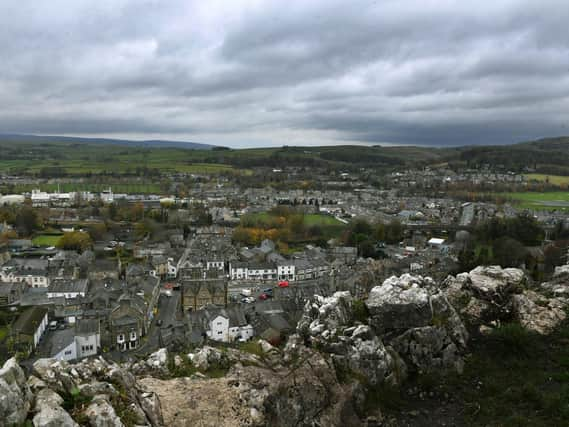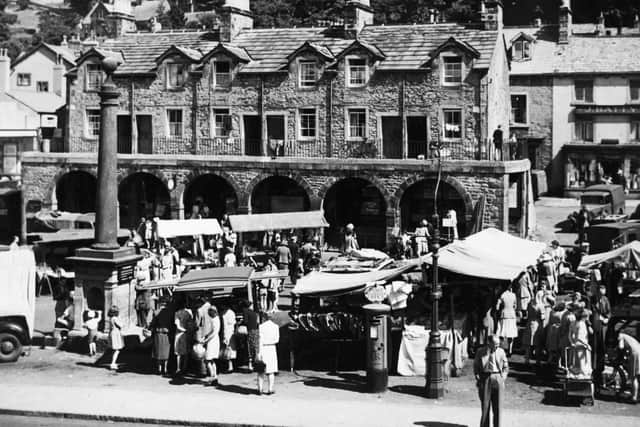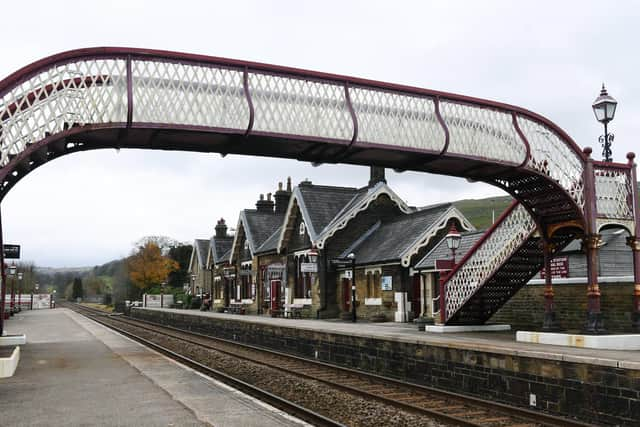Popular with everyone from ramblers to train enthusiasts, Settle is a town with unique appeal


It has a relatively small population, under 4,000 people, and yet it is part of one of the largest constituencies, in terms of geographical area, in England. Technically, there are two railway stations, one in the town itself, and the other at Giggleswick, just over the way. Welcome to Settle.
The great essayist, traveller, novelist (and part-time secret agent) Daniel Defoe visited the town when he was creating the snappily-titled A tour thro’ the whole Island of Great Britain, divided into Circuits or Journies. He went up and down the UK during the 1720s and gave what we might recognise today as pithy postcard descriptions of the places he explored.
Settle gets its mention in the third tome..


Advertisement
Hide AdAdvertisement
Hide AdHe says: “Settle is the capital of an isolated little kingdom of its own, surrounded by barren hills.” There are many who would agree with that description even today.
Settle is on a ridge and some thousand and more years back that was hugely important, for the valley bottoms were little more that stretches of marsh and bog. The streams and small rivers shot down from the heights and water collected, making access almost impossible.
If you needed to go to Leeds, Ripon or up into Cumbria, you had to follow the paths along the heights. Many were described as “drover’s roads”, where cattle and sheep were moved to markets, and the majority of them date back to the pre-Roman period, others to Medieval times. This was largely the sense of connection with the outside world until stage coaches arrived and later the railway.
Nevertheless, Settle (the name itself is the basic Anglo-Saxon name for “settlement”) pops up in the Domesday Book – there was seemingly nowhere that William’s scribing servants did not visit – and they were less than complimentary. They entered the comment on the vellum pages that it was, quite simply, “waste”. But Settle clearly fought back, for it was given a charter to allow it to hold a weekly market by Henry III in 1249.


Advertisement
Hide AdAdvertisement
Hide AdActually, that permission wasn’t granted to Settle itself, but to the Lord who “owned” the community, Henry de Percy, the feudal lord of Topcliffe, and a nephew to one of the Barons who had forced King John to sign the Magna Carta. Henry de Percy, in turn, would have demanded a tithe from any townsfolk who wished to set out their stalls. Then, as now, nothing came free, but gradually a proper market square developed and Settle started to grow in importance as a significant “trading post”.
A bridge across the River Ribble, to Giggleswick less than a mile away, followed in later years. And that was a great boon to anyone who wished to attend church, for Settle itself did not get an Anglican place of worship until the building of Holy Ascension in 1838.
Settle remained on the fringes of the English Civil War, but Cromwell’s troops were allowed to camp nearby in 1651, as they passed on their way to a skirmish in Lancaster. These were interesting times, for the Lords of the Manor were the Clifford family, staunch Royalists all. The townsfolk inclined to Cromwell’s views.
Settle grew in prosperity with the establishment of cotton mills, the export of agricultural lime from dozens of local kilns, and sandstone itself, which was quarried intensively. The town and the surrounding countryside was home to lots of little businesses, each employing perhaps a few people, but with a great deal going on.
Advertisement
Hide AdAdvertisement
Hide AdAs with so many other Yorkshire towns and cities, the arrival of the railway was a key moment. At first, trains went to Giggleswick with the “Little” North Western running services on its line from Skipton to Morecambe.
That was in 1847. It was just under 30 years later that Settle gained its own station and the story of the intense railway rivalries, revolts from the shareholders of the companies involved, bankruptcies and downright swindling would make an epic movie.
The Settle to Carlisle line is 73 miles long. It was built by the blood and sweat of over 6,000 navvies, many of whom died, from both disease and accidents, in the process. One of the most outstanding sections is The Ribblehead Viaduct and nearby are the remains of Batty Camp, where more than 2,000 lads, their wives and children made their homes.
It was like a small town in itself. There was no such thing as health and safety back then, nor was there any proper sanitation. And many plaques and monuments in the smaller churches around Settle bear witness to the death toll that the making of the line exacted. There were 80 deaths at Batty alone, after smallpox swept through the makeshift tents and habitations. Many rest in unmarked graves.
Advertisement
Hide AdAdvertisement
Hide AdThey could scarcely imagine that the land below and around the viaduct might one day be a scheduled ancient monument. But it is. Equally, what would they make of the fact that it is one of the most celebrated railway structures in the world, and also one of the most photographed?
These men built a 24 span, 440 yard, 104 feet high stone wonder over Batty Moss. Work started in October 1870 and the first commercial train to cross it came in August, 1875. Many decades later, after years of shabby neglect, the (then) British Rail decided that the line had to close.
The uproar at the decision was deafening. It didn’t just rock Settle, or even Yorkshire, it reverberated around the world. It was Michael Portillo, a former Tory minister and now a broadcaster known for his travel documentaries, who reversed BR’s plans in 1989, and – justly – he is regarded as something of a hero by many in these parts.
With careful management and marketing, the Settle to Carlisle line is now a gleaming jewel in the tourism crown, and it brings in valued “knock-on” cash to the local economy.
Advertisement
Hide AdAdvertisement
Hide AdSettle prides itself on gentle, quirky innovation. It has what is said to be the oldest café in the country, it has niche-market festivals, and a host of independent shops. You can find the volunteer-run Museum of North Craven Life in The Folly, a Grade-I listed building from the 17th century, and it makes for a fascinating visit.
The local landscape is riddled with caves and our ancestors prehistoric artefacts have been discovered in many of them. Let’s throw in a few names for good measure. The singer-songwriter and radio presenter Mike Harding is the Patron of Settle Stories, a charity that promotes traditional story-telling.
The late and much-missed Richard Whiteley of Countdown fame, was a pupil at Giggleswick School and left money to build a theatre in its grounds which it named after him. Chat show host Russell Harty was a master here when Whiteley was a pupil. The broadcaster Annice Sidwells was born here, and so was test cricketer Don Wilson.
The railway viaduct spans the valley, just as Settle spans the centuries. In times gone by the Ribble was used to power mills, today it is used for a nearby hydroelectric scheme linked up to the National Grid. Settle survives and thrives because it never stands still.
Advertisement
Hide AdAdvertisement
Hide AdSupport The Yorkshire Post and become a subscriber today. Your subscription will help us to continue to bring quality news to the people of Yorkshire. In return, you'll see fewer ads on site, get free access to our app and receive exclusive members-only offers. Click here to subscribe
Comment Guidelines
National World encourages reader discussion on our stories. User feedback, insights and back-and-forth exchanges add a rich layer of context to reporting. Please review our Community Guidelines before commenting.